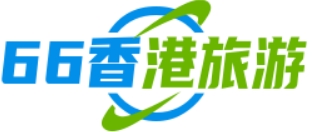本文目录
一、日本旅游景点英文介绍 日本旅游英语介绍
关于日本一些旅游景点介绍的英文翻译
Japan's three major cities of Osaka Castle, the first park, cherry blossoms around the city of Gilbert, about 4000 of the cherry. Osaka City has more than 400 years of history, high eight, the maximum level set is expected to Taiwan, you can view panoramic view of Osaka. Osaka City is unparalleled by numerous large stones from the composition. People with a heavy sense of dignity.Park green everywhere, very lush cherry trees is a good place for leisure walks.
Have been around in Japan, Yokohama's Chinatown Chinese New Year is really great fun. Where you can experience the traditional Chinese beside can enjoy traditional Chinese dishes......
日本又哪些景点(中英文互译的)
大涌谷(Owakudani)是箱根最著名的旅游景点。在绿树环抱的箱根中惟独此处山岩裸露,岩缝间喷出的地热蒸气雾气腾腾,令人感到地球的生命运动,尉为壮观。由此可眺望富士山和箱根群山的美丽景色。
东京迪斯尼有两大主题乐园,七座舒适的大饭店,以及其它购物娱乐设施所组成的欢乐世界。是大人找回童真,小孩寻找快乐的地方。
Tower)位于东京市内,建成于1958年,塔高333米,这座日本最高的独立铁塔上部装有东京都7个电视台、21个电视中转台和广播台等的无线电发射天线。在250米高的地方,也设有一个特别展望台。展望台四边都是落地的大玻璃窗,窗向外倾斜。
Mountain)位于本州岛中南部,海拔3776米,是日本最高峰,日本人奉之为“圣山”,是日本民族的象征,距东京约80公里,跨静冈、山梨两县,面积为90.76平方公里。整个山体呈圆锥状,山顶终年积雪。
Temple)位于奈良市的唐招提寺是由中国唐代高僧鉴真和尚亲手兴建的,是日本佛教律宗的总寺院,这座具有中国盛唐建筑风格的建筑物被确定为日本国宝。
Mount Fuji(Fujisan) is with 3776 meters Japan's highest mountain. It is not surprising that the nearly perfectly shaped volcano has been worshipped as a sacred mountain and experienced big popularity among artists and common people.
Mount Fuji is a dormant volcano, which most recently erupted in 1708. It stands on the border between Yamanashi and Shizuoka Prefectures and can be seen from Tokyo and Yokohama on clear days.
The easiest way to view Mount Fuji is from the train on a trip along the Tokaido Line between Tokyo and Osaka. If you take the shinkansen from Tokyo in direction of Nagoya, Kyoto and Osaka, the best view of Mount Fuji can be enjoyed from around Shin-Fuji Station on the right hand side of the train, about 40 to 45 minutes after leaving Tokyo.
Note however, that clouds and poor visibility often block the view of Mount Fuji, and you have to consider yourself lucky if you get a clear view of the mountain. Visibility tends to be better during the colder seasons of the year than in summer, and in the early morning and late evening hours.
If you want to enjoy Mount Fuji at a more leisurely pace and from a nice natural surrounding, you should head to the Fuji Five Lake(Fujigoko) region at the northern foot of the mountain, or to Hakone, a nearby hot spring resort.
Mount Fuji is officially open for climbing during July and August via several routes...
急求英语介绍旅游景点北海道,谢了
深谙美食真谛的北海道人并没有因为高贵的海鲜而冷落了平民化的拉面。在北海道,各地拉面的风味不尽相同,其中,札幌的味噌(酱汤)口味拉面、旭川的酱油口味拉面和函馆的盐味拉面是北海道拉面的代表。尽管口味不同,但是面滑、汤鲜和配料量足却是北海道拉面的共通之处。如果你是一个拉面爱好者,那么“拉面王国”札幌是你不能错过的地方,在这里,你能够将北海道所有风味的拉面“一网打尽”。Deep knowledge of food essence of Hokkaido have not left out the populace because of noble seafood ramen. Hokkaido ramen flavors vary, Sapporo miso(miso soup) flavor ramen ramen and Hakodate, Asahikawa sauce taste of salt ramen are representative of Hokkaido ramen. Even though tastes different, surface slip, soup of fresh ingredients and foot is Hokkaido Ramen in common. If you're a ramen enthusiast,"Kingdom of the hand-pulled noodles" Sapporo: you can't miss the place, here, you can also do all of Northern sea lanes flavored Ramen"clean sweep".
札幌的拉面以汤浓、面大碗著称。这点其实不难理解,天寒地冻的北国,大碗满埂又香又浓的汤面,才能让人有饱足感。日本拉面3种基本口味的其中一种——味噌拉面,也是起源于札幌的。基本上来说,正统的札幌味噌拉面,味噌是要用新泻出产的;而拉面中最重要的汤头,尽管用的是绞肉,口感上绝对不能比整片肉片来的差。Sapporo Ramen is famous for its soup thick, wide Bowl. It is not difficult to understand, very cold north, Ridge was sweet and thick noodles in bowl full, to make full sense. Japan one of the hand-pulled noodles of the 3 basic tastes-the miso ramen, also originated in Sapporo. Basically, Orthodox Sapporo miso ramen, miso is to use Niigata produces, and hand-pulled noodles of the most important in tangtou, although with Grounded Meat and taste absolutely not worse than whole pork.
北海道因为夏季温度低,适合乳牛生长,因此其乳制品受到日本人的欢迎。无论是冰激凌还是鲜奶,用蜡笔小新的话说:“好浓的北海道味道!”北海道是世界上白巧克力的发源地,所以包装精美的“白色恋人”白巧克力、软巧克力在北海道的纪念品店中处处可见。Because low summer temperatures, Hokkaido, for dairy cows, dairy was welcomed by the Japanese. Whether it is ice cream or milk, with Crayon Shin Chan:"good strong taste of Hokkaido!"Hokkaido is the home of white chocolate in the world, so the package" white lovers"white chocolate, soft chocolate in Hokkaido in souvenir shops everywhere.
请用英文翻译日本的旅游景点:二条城、皇居外苑(二重桥)心斋桥歌舞伎町(一番街),要正宗的!
歌舞伎町(一番街)Kabukicho(First Avenue)
二、东京文化旅游景点介绍英文版 东京著名景点英文介绍
Arashiyama(岚山?) is a district on the western outskirts of Kyoto, Japan. It also refers to the mountain across the _i River, which forms a backdrop to the district.
Notable tourist sites in Arashiyama include
The Iwatayama Monkey Park on the slopes of Mount Arashiyama. Over 170 monkeys live at the park. While the monkeys are wild, they have become accustomed to humans. The park is located on a small mountain not far from the Saga-Arashiyama rail station. Visitors can approach and photograph the monkeys. At the summit is a fenced enclosure, from within which visitors can feed the monkeys.
The romantic"Moon Crossing Bridge"(渡月桥,Togetsukyō), notable for its views of cherry blossoms and autumn colors on the slopes of Mt Arashiyama.
The tombstone of the Heike courtesan Kogo of Sagano.
Tenryū-ji, the main temple of the Rinzai school, one of the two main sects of Zen Buddhism in Japan.
The hamlet of Kiyotaki, a small scenic village at the base of Mt Atago, the home to a notable Shinto shrine.
Matsuo Shrine, half a mile south of the area, which is home to a blessed spring. It is also one of the oldest shrines in the Kyoto area, founded in 700. The alleged restorative properties of the spring bring many local sake and miso companies to the shrine for prayers that their product will be blessed.
Kameyama koen has a stone commemorating Zhou Enlai's visited to Arashiyama. He was moved by the cherry blossoms and mountain greenery. The four poems Zhou Enlai wrote about his visit are engraved on a stone monument:"Arashiyama in the Rain."
Nijō Castle(二条城,Nijō-jō?) is a flatland castle located in Kyoto, Japan. The castle consists of two concentric rings of fortifications, the Ninomaru Palace, the ruins of the Honmaru Palace, various support buildings and several gardens. The surface area of the castle is 275,000 square meters, of which 8000 square meters is occupied by buildings.
Present plan of Nijō Castle(click for detailed view)In 1601, Tokugawa Ieyasu, the founder of the Tokugawa Shogunate, ordered all the feudal lords in Western Japan to contribute to the construction of Nijō Castle, which was completed during the reign of Tokugawa Iemitsu in 1626. Parts of Fushimi Castle, such as the main tower and the Kara Gate, were moved here in 1625-26.[1] It was built as the Kyoto residence of the Tokugawa Shoguns. The Tokugawa Shogunate used Edo as the capital city, but Kyoto continued to be the home of the Imperial Court. Kyoto Imperial Palace is located north-east of Nijo Castle.
The central keep, or donjon, was struck by lightning and burned to the ground in 1791.
In 1788, the Inner Palace was destroyed by a city-wide fire. The site remained empty until it was replaced by a prince's residence transferred from the Kyoto Imperial Palace in 1893.
In 1867, the Ninomaru Palace was the stage for the declaration by Tokugawa Yoshinobu, returning the authority to the Imperial Court. Next year the Imperial Cabinet was installed in the castle. The palace became imperial property and was declared a detached palace. During this time, the Tokugawa hollyhock crest was removed wherever possible and replaced with the imperial chrysanthemum.
In 1939, the palace was donated to the city of Kyoto and opened to the public the following year.
Ryōan-ji(Shinjitai: _安寺, Kyūjitai:龙安寺?, The Temple of the Peaceful Dragon) is a Zen temple located in northwest Kyoto, Japan. Belonging to the Myoshin-ji school of the Rinzai branch of Zen Buddhism, the temple is one of the Historic Monuments of Ancient Kyoto, a UNESCO World Heritage Site.
The site of the temple was originally a Fujiwara family estate. It eventually came into the hands of the Hosokawa clan branch of the Fujiwaras. Hosokawa Katsumoto inherited the residence, and lived here before the _nin War. Katsumoto willed the war-ravaged property to be converted into a Zen sect temple complex after his death. Later Hosokawa emperors are grouped together in what are today known as the"Seven Imperial Tombs" at Ryoan-ji. The burial places of these emperors-- Uda, Kazan, Ichijō, Go-Suzaku, Go-Reizei, Go-Sanjō, and Horikawa-- would have been comparatively humble in the period after their deaths. These tombs reached their present state as a result of the 19th century restoration of imperial sepulchers(misasagi) which were ordered by Emperor Meiji.[1]
Ryōan-ji's tsukubai(蹲踞?), which is a small basin provided at Japanese Buddhist temples for visitors to purify themselves by the ritual washing of hands and rinsing of the mouth.An object of interest near the rear of the monks quarters is the carved stone receptacle into which water for ritual purification continuously flows. This is the Ryōan-ji tsukubai(蹲踞?), which translates literally as"crouch;" and the lower elevation of the basin requires the user to bend a little bit to reach the water, which suggests supplication and reverence.[2] The kanji written on the surface of the stone are without significance when read alone. If each is read in combination with口(kuchi), which the central bowl is meant to represent, then the characters become吾,唯,足,知. This is read as"ware tada taru(wo) shiru" and translates literally as"I only know plenty"(吾= ware= I,唯= tada= only,足= taru= plenty,知= shiru= know). The meaning of the phrase carved into the top of the tsukubai is simply that"what one has is all one needs" and is meant to reinforce the basic anti-materialistic teachings of Buddhism.
The absence of a dipper is intended to imply that the water is for the soul only and that it is necessary to bend the knee in humility in order to receive its blessing.
Kiyomizu-dera(清水寺?), full name Otowa-san Kiyomizu-dera(音羽山清水寺?) is an independent Buddhist temple in eastern Kyoto. The temple is part of the Historic Monuments of Ancient Kyoto(Kyoto, Uji and Otsu Cities) UNESCO World Heritage site.[1] Not one nail is used in the whole temple. The temple should not be confused with Kiyomizu-dera in Yasugi, Shimane, which is part of the 33-temple route of the Chūgoku 33 Kannon Pilgrimage through western Japan.[2]
其实这些都是维基百科找来的,本来想给链接的,百度说我有广告,只贴了部分,其他的可用google维基百科英文版找,包括景点介绍,历史什么的很全的。
日本又哪些景点(中英文互译的)
大涌谷(Owakudani)是箱根最著名的旅游景点。在绿树环抱的箱根中惟独此处山岩裸露,岩缝间喷出的地热蒸气雾气腾腾,令人感到地球的生命运动,尉为壮观。由此可眺望富士山和箱根群山的美丽景色。
东京迪斯尼有两大主题乐园,七座舒适的大饭店,以及其它购物娱乐设施所组成的欢乐世界。是大人找回童真,小孩寻找快乐的地方。
Tower)位于东京市内,建成于1958年,塔高333米,这座日本最高的独立铁塔上部装有东京都7个电视台、21个电视中转台和广播台等的无线电发射天线。在250米高的地方,也设有一个特别展望台。展望台四边都是落地的大玻璃窗,窗向外倾斜。
Mountain)位于本州岛中南部,海拔3776米,是日本最高峰,日本人奉之为“圣山”,是日本民族的象征,距东京约80公里,跨静冈、山梨两县,面积为90.76平方公里。整个山体呈圆锥状,山顶终年积雪。
Temple)位于奈良市的唐招提寺是由中国唐代高僧鉴真和尚亲手兴建的,是日本佛教律宗的总寺院,这座具有中国盛唐建筑风格的建筑物被确定为日本国宝。
富士山,是一座跨越在日本静冈县(富士宫市、裾野市、富士市、御殿场市、骏东郡小山町)与山梨县(富士吉田市、南都留郡鸣_村)之间的活火山。
东京塔是东京地标性建筑物,位于东京都港区芝公园,高332.6米。东京塔除主要用于发送电视、广播等各种无线电波外、还在大地震发生时发送JR列车停止信号,兼有航标、风向风速测量、温度测量等功能。
阿苏山是日本著名活火山。位于九州岛熊本县东北部,是熊本的象征,以具有大型破火山口的复式火山闻名于世。略呈椭圆形,南北长24公里,东西宽18公里,周围约120公里,面积250平方公里。
4,唐招提寺(Tōshōdai Temple)
唐招提寺,日本佛教律宗建筑群。简称为招提寺。在日本奈良市西京五条。由中国唐朝鉴真主持,于公元759年建成,与东大寺的戒坛院并为传布和研究律学的两大道场。
鹿苑寺(ろくおんじ),是位于日本京都市北区的临济宗相国寺派的寺院。其中,内外都贴满了金箔的三层楼阁建筑(舍利殿)也被称为金阁,包括舍利殿在内的寺院整体也被称为金阁寺(きんかくじ)。该寺为相国寺的山外塔头寺院。
参考资料来源:百度百科-唐招提寺
Tokyo is the capital of Japan.It is the biggest city in Asia and it is also very beatiful.You can see the beatiful mountain in Tokyo.There is snow on it and it looks very nice.I hope on day I can go there.
三、日本著名景点英文名称
富士山,是一座跨越在日本静冈县(富士宫市、裾野市、富士市、御殿场市、骏东郡小山町)与山梨县(富士吉田市、南都留郡鸣沢村)之间的活火山。
东京塔是东京地标性建筑物,位于东京都港区芝公园,高332.6米。东京塔除主要用于发送电视、广播等各种无线电波外、还在大地震发生时发送JR列车停止信号,兼有航标、风向风速测量、温度测量等功能。
阿苏山是日本著名活火山。位于九州岛熊本县东北部,是熊本的象征,以具有大型破火山口的复式火山闻名于世。略呈椭圆形,南北长24公里,东西宽18公里,周围约120公里,面积250平方公里。
4,唐招提寺(Tōshōdai Temple)
唐招提寺,日本佛教律宗建筑群。简称为招提寺。在日本奈良市西京五条。由中国唐朝鉴真主持,于公元759年建成,与东大寺的戒坛院并为传布和研究律学的两大道场。
鹿苑寺(ろくおんじ),是位于日本京都市北区的临济宗相国寺派的寺院。其中,内外都贴满了金箔的三层楼阁建筑(舍利殿)也被称为金阁,包括舍利殿在内的寺院整体也被称为金阁寺(きんかくじ)。该寺为相国寺的山外塔头寺院。
参考资料来源:百度百科-唐招提寺











